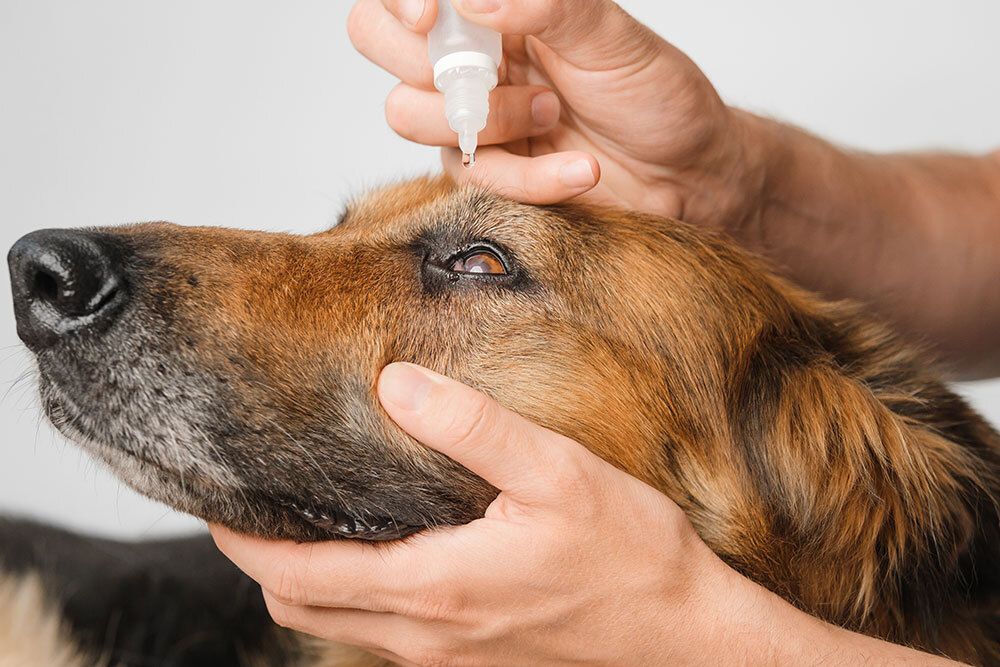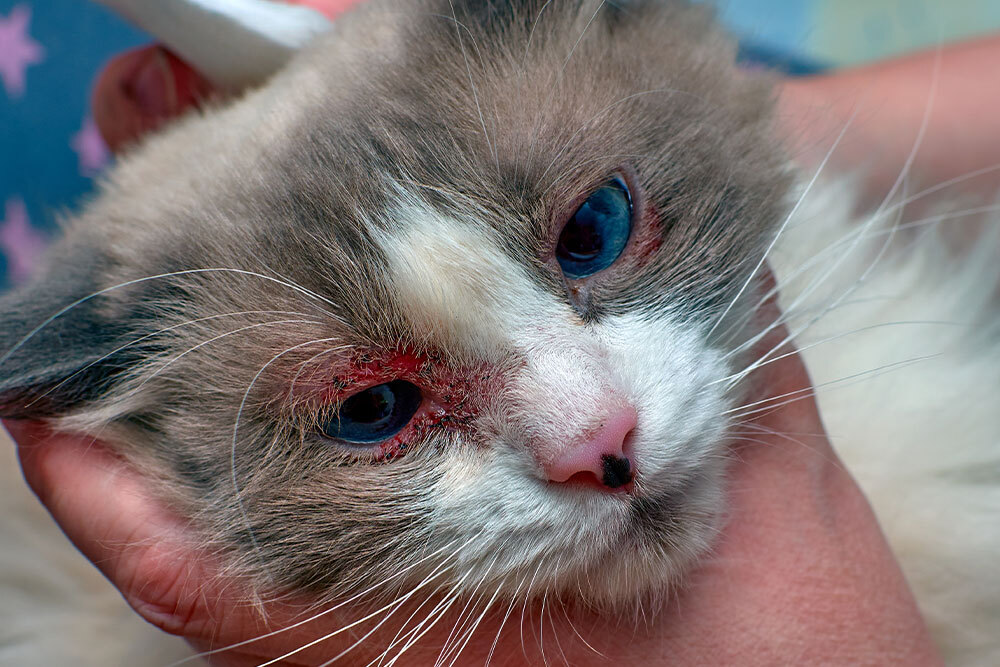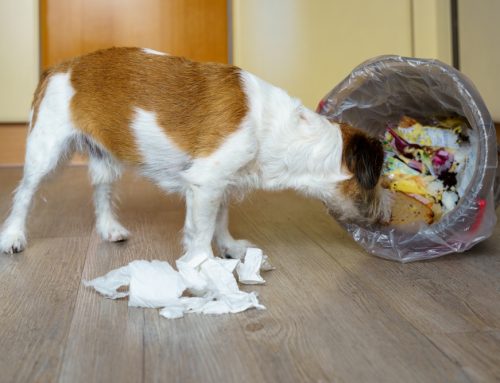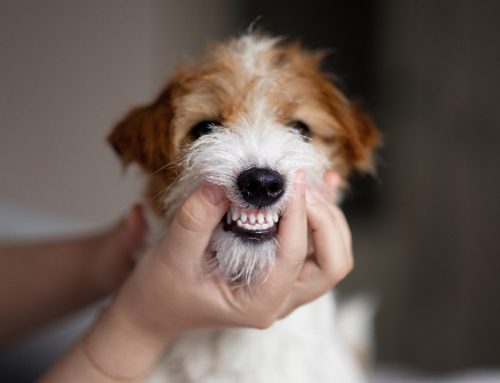Common Eye Problems in Pets: What Stanton Pet Owners Should Know
Your pet’s eyes may not say words, but they can definitely speak volumes- especially when something’s wrong. A little squint here, some cloudy gunk there, and suddenly your dog or cat is rubbing their face on the carpet like it’s urgent. At Stanton Pet Hospital in Stanton, CA, we see these situations every day. And we want you to feel confident in spotting the signs, understanding what they might mean, and knowing when it’s time to call us.
When Is an Eye Problem an Emergency?
Some eye issues sneak up over time, while others hit fast and hard. Either way, your pet can’t tell you what’s going on- so it’s up to you to watch for the signs.
Be on alert if you notice:
- Squinting or excessive blinking
- Discharge (clear, yellow, green, or bloody)
- Redness or swelling around the eye
- Cloudy or bluish cornea
- Rubbing or pawing at the face
- Sudden vision loss or disorientation
Even if your pet doesn’t seem “in pain,” eye problems are rarely something to wait out. Here’s a helpful guide to signs of eye pain, along with a solid overview of eye emergencies that every pet owner should know.
Let’s take a look at the most common issues we diagnose and treat in dogs and cats.
Conjunctivitis: A Sign of Irritation
Conjunctivitis refers to inflammation of the conjunctiva- the thin tissue lining the eyelids and covering the eye’s surface. In pets, conjunctivitis can stem from a range of causes:
- Bacteria or viruses
- Allergies or environmental irritants
- Foreign bodies like plant material or dust
Redness, discharge, squinting, and pawing at the eye are all classic symptoms. If you want to dive deeper into the causes and treatment options, this article is a great resource.
Corneal Ulcers: When the Surface Gets Scratched
The cornea is like the windshield of your pet’s eye- and just like a real windshield, it doesn’t take much to scratch it. Whether it’s a swipe from another animal, a poke from a plant, or dry eyes, once it’s damaged, it hurts.
Signs include:
- Cloudiness or haze over the eye
- Excessive blinking
- Sensitivity to light
- Eye rubbing or pawing
Treatment depends on the cause and depth of the ulcer, but it’s always worth a vet visit. This corneal ulcer handout walks you through what to expect.
Cataracts vs. Nuclear Sclerosis: What’s That Cloudiness?
As your pet ages, it’s normal to see a little cloudiness develop in the eyes. This is often nuclear sclerosis- a harmless change that doesn’t affect vision much. Cataracts, on the other hand, block vision and may lead to blindness if untreated.
If you’re wondering which one you’re seeing, this comparison from the ACVO can help. Or just give us a call. We’re happy to take a look.
Glaucoma: A Silent Threat
Glaucoma is all about pressure- the kind that builds up inside the eye and damages the optic nerve. It’s painful, and it can move fast.
Watch for:
- Bulging of the eyeball
- Cloudy or red eye
- Tearing or excessive blinking
- Lethargy or behavioral changes
Time is critical. This glaucoma overview explains why fast action makes a difference.
Lens Luxation: When the Lens Moves Out of Place
Think of the lens like a camera part- its job is to focus light properly. If it shifts or dislocates (a condition called lens luxation), things go blurry fast. Symptoms might include oddly shaped or cloudy pupils, discomfort or squinting, and vision changes or bumping into things.
Merck’s guide offers great insight into what this looks like and how it’s treated.
Eyelid and Eyelash Disorders
Some pets have eyelids that roll inward (entropion) or outward (ectropion), or they may grow lashes in the wrong place. These conditions can rub against the eye, leading to discomfort or even ulcers.
If your pet has red, runny eyes or blinks constantly, a lid or lash problem could be the culprit. Learn more about entropion and other eyelid disorders here.
Cherry Eye
Cherry eye is pretty hard to miss- it looks like a red bubble at the inner corner of your dog’s eye. This happens when the third eyelid gland pops out of place.
It’s not usually painful, but it can become irritated or infected. Here’s more on cherry eye and why surgical correction is often the best option.
Pannus
Pannus is an autoimmune disease that affects the cornea, especially in German Shepherds and other large breeds. It causes scar tissue, pigment, and blood vessels to grow over the eye, eventually interfering with vision.
It’s manageable with lifelong treatment, especially if caught early. Learn more about pannus here.
Eye Cancer in Pets
Though rare, eye tumors can appear in or around the eye. Symptoms vary but may include swelling, bleeding, or changes in the eye’s shape or color.
Merck’s article on eye tumors gives an excellent overview of what to watch for.
Hereditary Eye Conditions
Some dogs and cats are genetically predisposed to eye disease. From glaucoma to retinal degeneration, many conditions can be screened for early- sometimes even before symptoms appear.
If you have a purebred dog, check out this resource from the BVA. For cat owners, Cornell’s feline eye health guide is a great place to learn more.
What to Do if You Notice a Problem
If your pet is acting different- blinking more, hiding, or just looking “off”- don’t wait to see if it clears up. Eye problems tend to worsen fast and can be tricky to treat at home.
At Stanton Pet Hospital, we’re equipped to perform a full eye exam, explain your options, and get your pet on the road to recovery. We’ll also teach you how to safely administer eye medications, so your pet gets the care they need between visits.
Contact Us
Whether you’re dealing with mild discharge or a full-blown eye emergency, we’re here for you. Meet our team, request an appointment, or contact us directly to get started.
When it comes to your pet’s vision, trust your instincts- and trust our team to help.







Leave A Comment